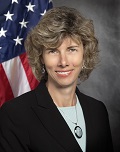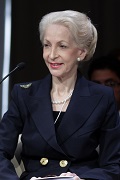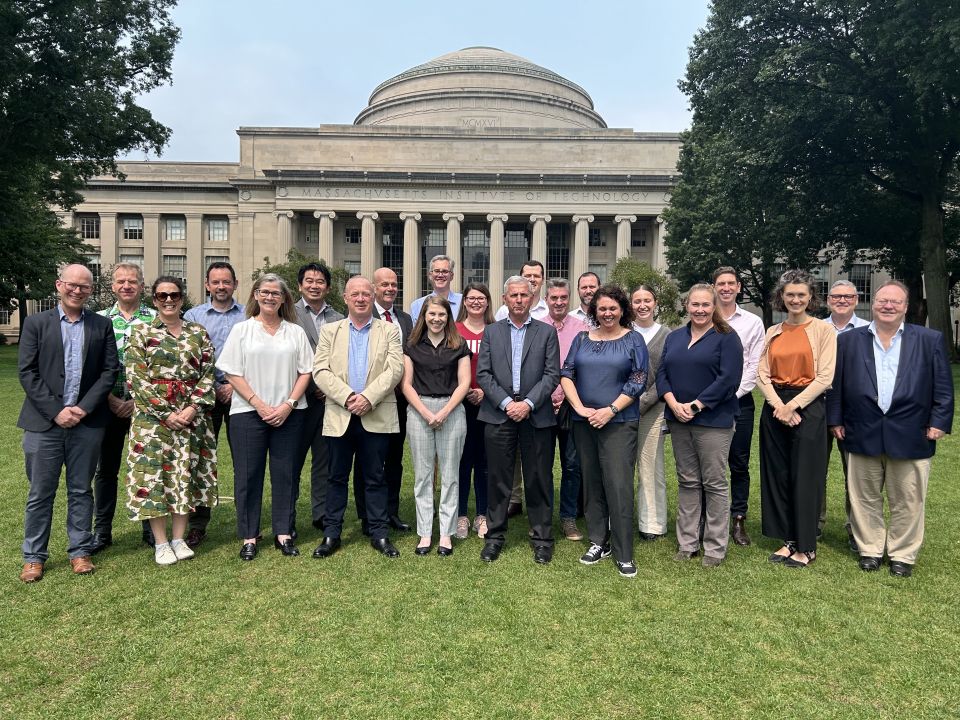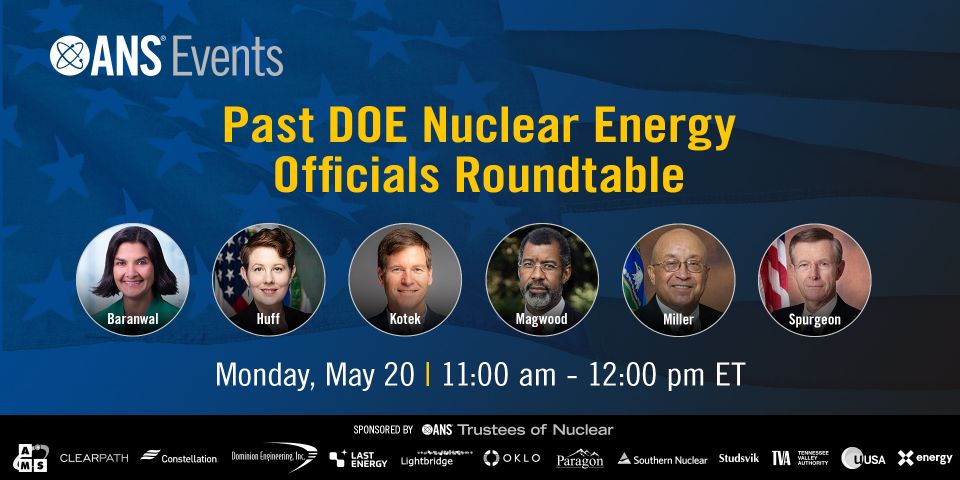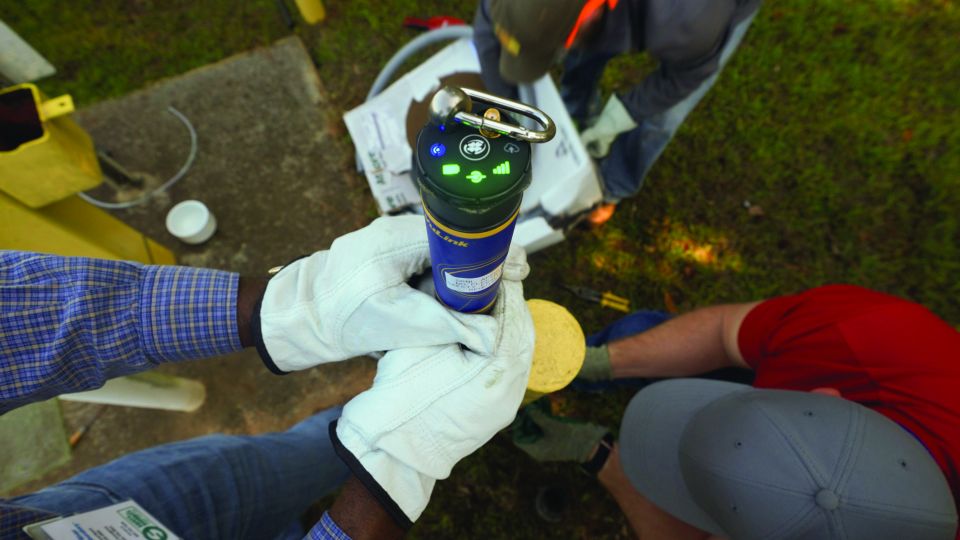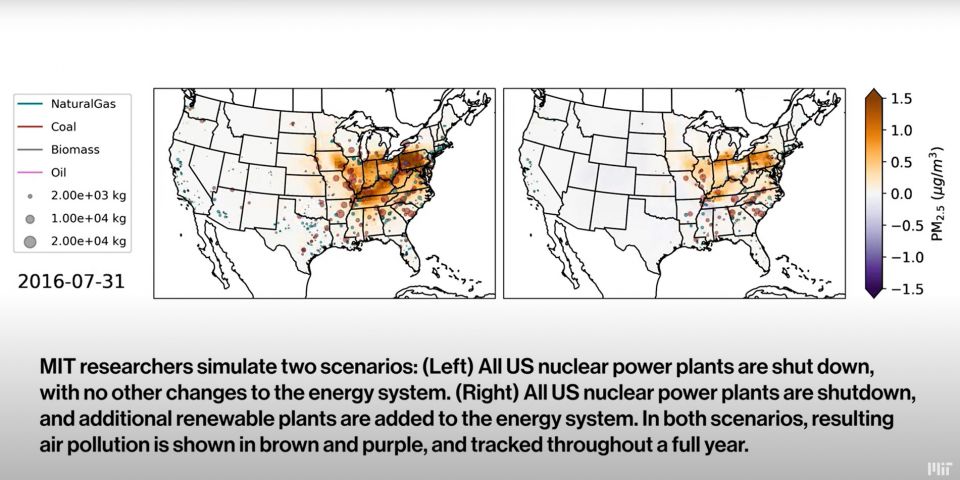Rising Stars in Nuclear Science and Engineering Symposium
 Recently I had the honor of joining the "Rising Stars in Nuclear Science and Engineering Symposium" at the Massachusetts Institute of Technology. It was a unique symposium, inviting a dozen Ph.D. candidates and early postdoctoral fellows to showcase their research, and to engage in rich discussions of early career strategies and challenges with exceptional researchers in the field.
Recently I had the honor of joining the "Rising Stars in Nuclear Science and Engineering Symposium" at the Massachusetts Institute of Technology. It was a unique symposium, inviting a dozen Ph.D. candidates and early postdoctoral fellows to showcase their research, and to engage in rich discussions of early career strategies and challenges with exceptional researchers in the field.
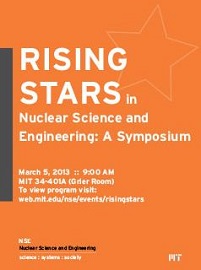 This event came about as the idea of Professor Richard Lester, head of the Department of Nuclear Science and Engineering (NSE) at MIT. He envisioned a research symposium targeted specifically toward women in NSE, a field where the percent of female graduates at all degree levels hovers around 20 percent. Supported by the generous sponsorship of the David J. Rose Fund, the symposium was organized by MIT professors Paola Cappellaro, Bilge Yildiz, and Anne White, who made extraordinary role models for the women in attendance.
This event came about as the idea of Professor Richard Lester, head of the Department of Nuclear Science and Engineering (NSE) at MIT. He envisioned a research symposium targeted specifically toward women in NSE, a field where the percent of female graduates at all degree levels hovers around 20 percent. Supported by the generous sponsorship of the David J. Rose Fund, the symposium was organized by MIT professors Paola Cappellaro, Bilge Yildiz, and Anne White, who made extraordinary role models for the women in attendance.
The core of the symposium showcased the technical work of the invited attendees, an impressive agenda of young scientists from universities and laboratories around the United States as well as abroad. These technical talks featured an array of sophisticated experimental, analytical, and theoretical research paths these researchers are charting across plasma physics, materials science, reactor physics, environmental management, and more.
The symposium also presented the attendees with two fabulous keynote speakers. The first, in a very intimate early morning conversation, was Dr. Allison Macfarlane, who described her rocket-like career from its graduate stage, into postdoctoral work, on to professorship, and upward to her current distinguished position as the chairman of the US Nuclear Regulatory Commission. Macfarlane shared her high hopes for this generation's scientists as well as her advice for us. She encouraged the attendees to continue to work hard and assured us, "You're good enough."
The lunch keynote featured the truly delightful Lady Barbara Judge, past chairman of the UK Atomic Energy Authority. She delivered sage advice concerning what seemed to be all aspects of professional life. She addressed working hard, dressing professionally, selecting supportive life partners, making one's ambitions known, and bringing other women to the top while blazing a path there.
Finally, the symposium concluded with a highly interactive panel of many new professors at MIT titled: "How to Get a Faculty Position... and Survive It." The panel included the organizing Professors Capellaro, Yildiz, and White as well as Professors Krystyn Van Vliet and Jacopo Buongiorno. They were refreshingly frank as they discussed early challenges and success strategies for research careers in NSE. They covered strategies for mentoring graduate students, pursuing grants and research collaborations, and making time for a bit of life outside of ones research.
In addition to immensely enjoying the technical presentations by the "Rising Stars," I benefited greatly from sharing my work in turn and received invaluable advice about building a career in this field. I look forward to interacting with the research community I found at this event, and I look forward to its growth as other departments and institutions follow in the footsteps of MIT's NSE to generate similar early-career symposia.
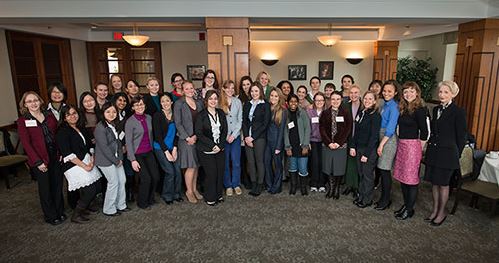
Photo by Barry Hetherington
________________________________
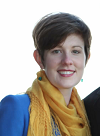 Katy Huff is a PhD candidate in nuclear engineering at the University of Wisconsin-Madison and a laboratory graduate appointee at Argonne National Laboratory working on computational fuel cycle analysis. She currently develops Cyder, a nuclear waste disposal system model, and the Cyclus next generation fuel cycle simulator.
Katy Huff is a PhD candidate in nuclear engineering at the University of Wisconsin-Madison and a laboratory graduate appointee at Argonne National Laboratory working on computational fuel cycle analysis. She currently develops Cyder, a nuclear waste disposal system model, and the Cyclus next generation fuel cycle simulator.


